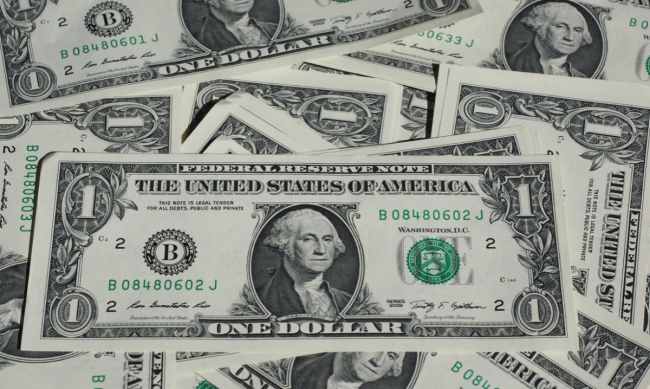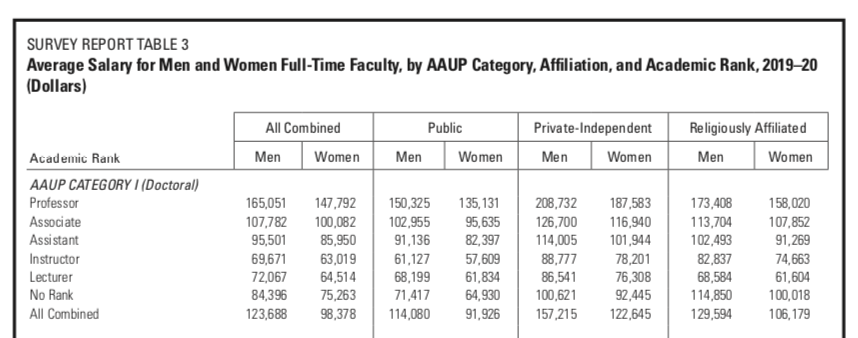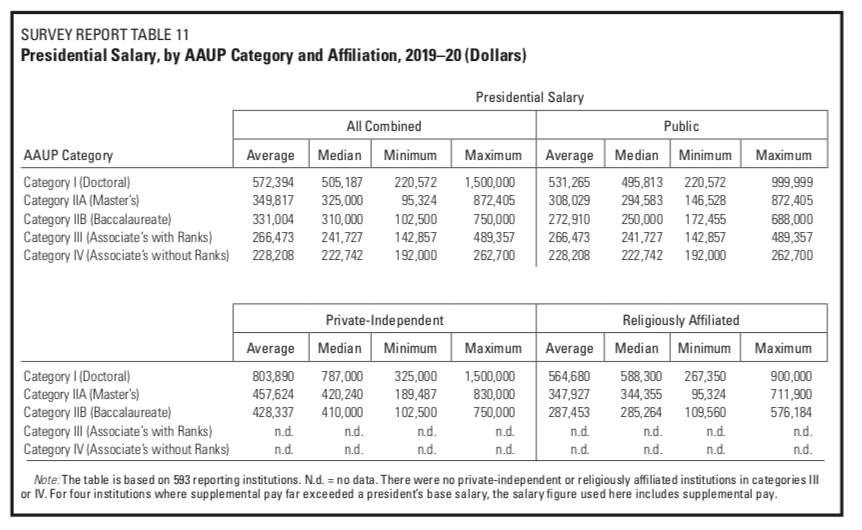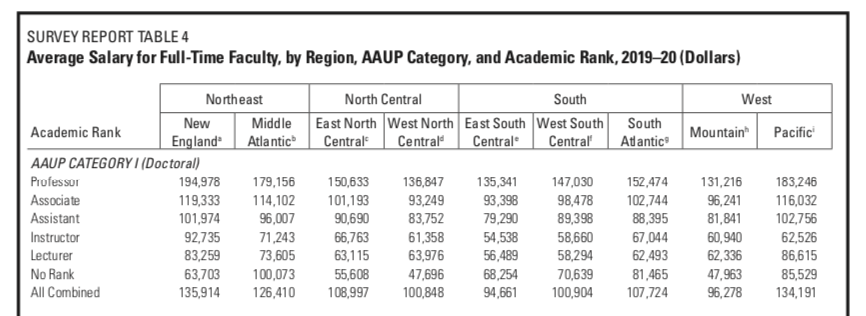You have /5 articles left.
Sign up for a free account or log in.

Pexels.com
Faculty members may be working harder than ever, but their pay has “barely budged” in four years, according to the American Association of University Professors’ annual Faculty Compensation Survey.
Average salaries for full-time professors increased by 2.8 percent this year over last, but consumer prices grew 2.3 percent over the same period, the AAUP notes in a preliminary report on the data: “Following the Great Recession of the late 2000s, nominal salary growth remained below consumer price growth until 2015-16 and has remained flat ever since.”
By institution type, average salaries for full-time professors at doctoral institutions this year increased 2.8 percent, before adjusting for inflation. Average salaries at master’s and associate’s institutions increased 1.2 percent and 1 percent respectively, meaning that they decreased by about 1 percent when adjusted for inflation. Salaries at baccalaureate institutions increased by 2.3 percent on average, matching the annual inflation rate.
Next year will be no better, it's all but certain: already colleges and universities have announced hiring freezes and, in some cases, pay cuts to address the financial impact of the COVID-19 disruption. But the AAUP’s data, collected before that disruption, will serve as important benchmarks when institutions look at faculty pay in reassessing their budgets.
Glenn Colby, senior research officer for the AAUP, said the association continues to study how institutions have responded to past economic crises. This time around, he said, “we may be in for a rough ride,” if some of the most dire predictions about unemployment rates become reality.
In such a scenario, “many institutions will need to make adjustments to balance their budgets,” and some discussions may be framed in terms of financial exigency, Colby said.

Some colleges and universities may respond by reducing faculty salaries, Colby added, as was common during the Great Depression. Others may terminate faculty appointments or reorganize -- “hopefully following AAUP’s recommended standards and procedures.” (Few institutions actually cut nominal salaries during the Great Recession.)
In any case, he added, “this year’s results will provide some benchmarks to help characterize how institutions respond to the changing economic conditions.”
The association's more detailed report on the data is expected in May.
Variation in Pay and Benefits
Other significant, preliminary findings include those on gender. Mirroring the national overall pay gap, average faculty salaries for women were 81.4 percent of those for men. Across all institution types, male full professors make about $146,600, while female full professors make about $127,600. Among assistant professors across institution types, men make about $86,500 and women make $78,900.
“Despite shifts in distributions between men and women in terms of faculty rank, the gender pay gap has not budged over the last ten years,” the AAUP’s report notes.
Beyond gender, full-time faculty salaries vary by rank and institutional affiliation or type. The average salary for a full professor at a private doctoral university is nearly $203,000, while the salary for a full professor at a public baccalaureate college is just over $99,000.

On benefits, the AAUP found that about 97 percent of full-time professors earn contributions toward their retirement plans from their employers or state or local governments. The average expenditure is 10.7 percent of average salary.
Some 94 percent of full-time professors receive medical benefits in the form of institutional contributions to premiums for insurance plans, according to the report. The average expenditure there is 11.9 percent of the average salary.
This year’s survey includes information from 928 institutions, from community colleges to research universities. Data pertain to nearly 380,000 full-time professors and 96,000 part-time instructors, along with many senior administrators. Collection ended in February.
Adjuncts
The AAUP’s report has included more information about part-time professor pay in recent years. Probably unsurprisingly to any adjunct, this year’s survey found that per-course pay varies widely -- but that pay was still “appallingly low.” The average rate was $2,263 per section at public associate’s degree-granting institutions to $4,620 per section at private doctoral institutions.
Most faculty members who are paid by the course do not receive either retirement or medical benefits. Some 38 percent of reporting institutions contribute to retirement plans from some or all part-timers, according to the AAUP, and 37 percent help with premiums for medical insurance plans. Adjuncts are doctoral universities are most likely to receive benefits, with 52 percent of these reporting institutions contributing to their retirement and 60 percent to medical insurance plans.
While full-time professor pay data are from 2019-20, part-time professor pay data are from 2018-19, to ensure more accurate pay records for the latter group.
Presidents
Presidential pay continues to be a thorn in the AAUP’s side, as it typically outpaces growth for faculty pay across institution types. At doctoral and master’s degree-granting institutions, presidents’ salaries increased 6 percent year over year. Presidents’ pay at baccalaureate and associate’s degree-granting institutions increased by 3 percent and 9 percent, respectively. Median presidential salaries in 2019-20 range from around $230,000 for public associate’s institutions to nearly $800,000 at private, independent doctoral universities, according to the report.
“Ratios of presidents’ to full professors’ salaries range from just over three to one in public associate’s institutions to over five to one in private-independent doctoral institutions,” the AAUP notes.

Chief academic officers make about $383,000, on average, at doctoral institutions. At community colleges, they make $135,694. Pay for chief financial officers is very similar to their academic officer counterparts.
Who Earns Most, Where
In additional to its overall analysis, AAUP publishes institution-specific data each year. As usual, colleges and universities in the Northeast, Mid-Atlantic and West Coast make the most.

Below are lists of some of the highest-paying colleges and universities, by rank and type. All the lists look the very similar to last year's, with Columbia University offering the highest average full professor pay, the University of California system dominating the publics in terms of pay, and Barnard College being the highest-paying liberal arts college for full professors. The final list, concerning assistant professor pay, has a new No. 1, however: Babson College. Stanford University held that spot for 2018-19.
|
Top Average Salaries for Full Professors at Private Universities, 2019-20 |
|
1. Columbia University |
$268,400 |
|
2. Stanford University |
$261,900 |
|
3. Princeton University |
$255,000 |
|
4. Harvard University |
$253,900 |
|
5. University of Chicago |
$246,100 |
|
6. Yale University |
$242,200 |
|
7. Massachusetts Institute of Technology |
$240,400 |
|
8. University of Pennsylvania |
$237,300 |
|
9. Duke University |
$221,500 |
|
10. New York University |
$221,000 |
|
Top Average Salaries for Full Professors at Public Universities, 2019-20 |
|
1. University of California, Los Angeles |
$225,000 |
|
2. University of California, Berkeley |
$213,100 |
|
3. University of California, Santa Barbara |
$200,200 |
|
4. Rutgers University at Newark |
$192,200 |
|
5. University of California, San Diego |
$191,500 |
|
6. University of California, Irvine |
$189,200 |
|
7. New Jersey Institute of Technology |
$187,300 |
|
8. University of Virginia |
$185,100 |
|
9. University of Texas at Austin |
$183,800 |
|
10. University of California, Davis |
$182,600 |
|
Top Average Salaries for Full Professors at Liberal Arts Colleges, 2019-20 |
|
1. Barnard College |
$181,600 |
|
2. Claremont McKenna College |
$177,200 |
|
3. University of Richmond |
$164,200 |
|
4. Wellesley College |
$162,700 |
|
5. Pomona College |
$161,200 |
|
6. Wesleyan University |
$160,200 |
|
7. Swarthmore College |
$158,400 |
|
8. Harvey Mudd College |
$157,300 |
|
9. Colgate University |
$156,500 |
|
10. Williams College |
$152,800 |
|
Top Average Salaries for Assistant Professors at All Institution Types, 2019-20 |
|
|
1. Babson College |
$141,600 |
|
2. Massachusetts Institute of Technology |
$138,800 |
|
3. Stanford University |
$138,800 |
|
4. Harvard University |
$138,600 |
|
5. California Institute of Technology |
$137,200 |
|
6. University of Pennsylvania |
$136,500 |
|
7. Columbia University |
$135,700 |
|
8. University of Chicago |
$135,300 |
|
9. Bentley University |
$128,300 |
|
10. Duke University |
$123,500 |





